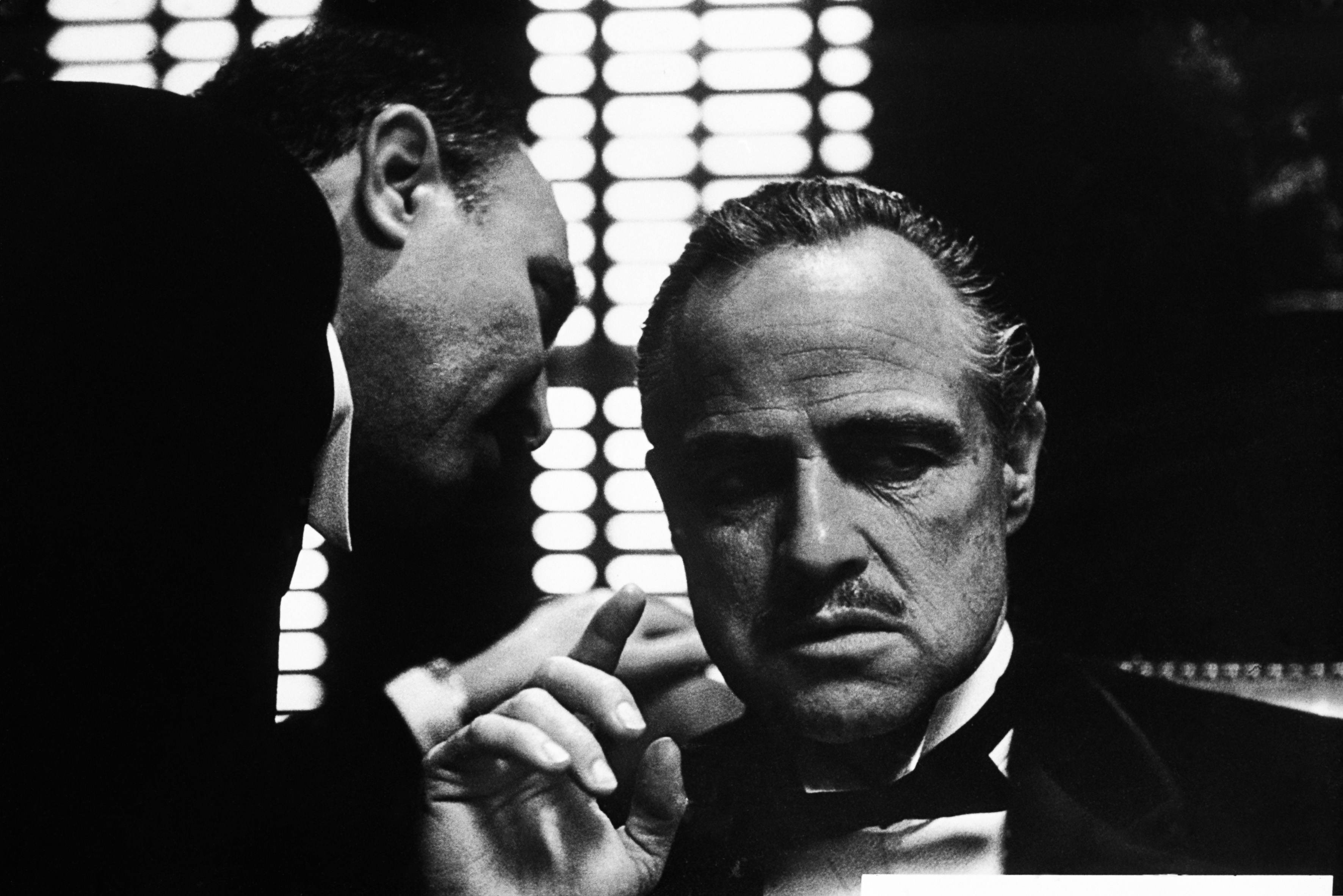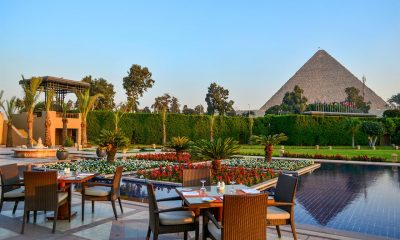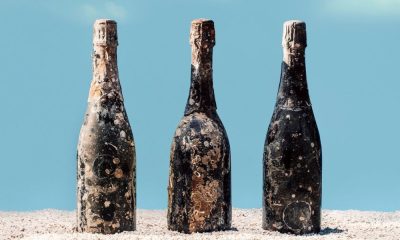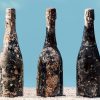BUSINESS NEWS
Blockbuster movies create booms for tourism — and headaches for locals
Italian Americans are forever battling mafia stereotypes. New Zealanders are sick and tired of Tolkien tourists. Italian cops are chasing people out of Rome’s Trevi Fountain.Blockbuster hits like “The Godfather” and “The Lord of the Rings” can bring a massive tourism influx to the places where they’re filmed. But headaches often follow.In 1996, Mel Gibson’s historical action film “Braveheart” led to a 300% increase in visitors to The National Wallace Monument in Scotland. Similarly, the “Harry Potter” film franchise caused tourism to increase at least 50% to every U.K. location where the movies were filmed, according to an article in the Journal of Travel Research in 2006.Mel Gibson’s “Braveheart” led to a 300% increase in visitors to The National Wallace Monument in Scotland.20th Century-Fox | Moviepix | Getty Images”Film tourism” as it is known, can boost local economies and fill in gaps caused by seasonal tourism lulls. But there’s often a downside.Negative connotationsRegarded as one of the greatest films of all time — “The Godfather” — created a unique set of problems for the places featured in the movie.Part of the film was set in the Sicilian village of Corleone, where the character of mafia boss Vito Corleone, played by Marlon Brando, was born and raised before immigrating to New York City.Fans of “The Godfather” trilogy still associate Corleone, Sicily with crime, violence and mafia culture.Michael Ochs Archives | Moviepix | Getty ImagesArtist Maria D. Rapicavoli, who studied the place called Corleone, said many tourists go in search of “The Godfather” atmosphere but leave disappointed when they don’t meet any mafiosi.”Not sure what they are looking for — maybe for men holding guns in the street or … women wearing black?” she told CNBC.Rapicavoli examined her experiences there in an exhibit entitled “If You Saw What I Saw,” writing that Corleone is a place where people “play the role of actors in front of an audience of demanding tourists as if their town were a permanent film set.”In a description of the exhibit, she recounted people she met: a Polish tourist looking for “The Godfather’s village,” a Canadian who was happy to be in a “real mafia atmosphere” and a tourist guide who gave lessons about the Italian mob.Ironically, the movie wasn’t even shot in Corleone, but in the Sicilian villages of Savoca and Forza d’Agro.The popularity of “The Godfather,” as well as “Goodfellas” and “The Untouchables,” has also caused problems in the United States. Some argue those movies unfairly stereotype Italian Americans as violent and misogynistic criminals to the millions of viewers who watched them.Reckless behavior”The Hangover” and its depictions of drug-addled, wild bachelor parties may be encouraging reckless behavior in Las Vegas. People try to mimic famous scenes in the movie, including sneaking up to the roof and asking where to find live tigers, according to the Las Vegas Review-Journal.People still quote the famous line “Did Caesar live here?” in the main lobby of Caesars Palace, a hotel representative told CNBC. Others request to stay in the “Hangover Suite” — though those portions of the movie were shot on a film set.A wax figure of actor Zach Galifianakis portraying the character Alan Garner at “The Hangover’ Experience” at Madame Tussauds Las Vegas.Bryan Steffy | Getty Images Entertainment | Getty ImagesTour packages and recreated sets in Las Vegas let fans of the trilogy relive the movie without the mayhem.Across the Atlantic Ocean, film fans are defying local laws.Since the release of famed Italian film director Federico Fellini’s “La Dolce Vita” in 1960, inspired tourists have emulated the movie’s most memorable scene by climbing into Rome’s Trevi Fountain. To this day — some 60 years later — Italian authorities continue to grapple with overzealous fans, some of whom have proudly worn gowns and fur stoles as they waded around the fountain. Actors Marcello Mastroianni and Anita Ekberg inside Rome’s Trevi Fountain while filming director Federico Fellini’s “La Dolce Vita” in 1959.Umberto Cicconi | Hulton Archive | Getty ImagesOther incidents have been more chaotic. Tourists have been caught swimming and splashing around, sometimes undressed. Others have tried climbing on the sculptures or carving their names into them, putting the architecture at risk.Rome’s authorities have begun cracking down on trespassers and have raised fines of up to 450 euros ($527) for disorderly behavior around the fountain, according to Italian media reports.In 2020, a plan to build a 1-meter-high steel and glass barrier around the perimeter of the fountain was approved by Rome’s city council but received heavy criticism from heritage experts who worried it would ruin the view.OvertourismNew Zealand has seen a massive boom in tourism thanks to “The Lord of the Rings” and “The Hobbit” trilogies.In what has been dubbed “Tolkien tourism,” travelers seek out locations where the movies were filmed, such as Matamata — which served as the Shire — and the scenic reserve in Queenstown where the character of Boromir met an untimely death.One in three visitors to New Zealand in 2019 visited at least one film set, according to Tourism New Zealand, the country’s tourism authority. During the same year, more than one in 10 went to Hobbiton, which gives guided set tours of Hobbit’s homes.Movie fans can take “Second Breakfast” tours at Hobbiton in Matamata, New Zealand.Anna Gorin | Moment | Getty ImagesThe movies are the reason about 10% of all visitors to New Zealand in 2019 seriously considered a trip there, according to Tourism New Zealand. Those travelers added around 630 million New Zealand dollars ($437 million) to the country’s economy in 2019 alone, the tourism authority told CNBC.A survey by the tourism board, however, showed that almost one in five Kiwis are worried that the country attracts too many tourists. Overcrowding at tourist spots, lack of infrastructure, road congestion and environmental damage are creating tension between locals and visitors, according to a 2019 report by Tourism New Zealand.Popularized by Leonardo DiCaprio’s adventure drama “The Beach,” Maya Bay on Thailand’s Phi Phi Leh Island was closed to visitors in 2018 after a spike in tourists damaged the island’s environment.The popularity of Leonardo DiCaprio’s 2000 adventure film “The Beach” led to Thailand’s Maya Bay becoming a hotspot for international tourists.Lillian Suwanrumpha | AFP | Getty ImagesAfter the movie’s release in 2000, the once-deserted bay became a popular day-trip destination for tourists coming from Phuket and Krabi. Tourists, said to number up to 5,000 a day, traveled by boats to the area, leaving behind litter and pollution that hurt local wildlife and coral.Some three years later, Maya Bay remains closed. Some visitors have been allowed to tour the island as part of a reopening test, a Thailand tourism representative told CNBC.Overblown impactFilm tourism doesn’t always turn sour.The release of “Star Wars: The Force Awakens” (2015) and “Star Wars: The Last Jedi” (2017) caused a significant rise in interest in Ireland’s Skellig Michael, an island featured in both films.Nearly 17,000 people visited the island in 2018, according to Ireland’s Office of Public Works which oversees the site — an increase from the 11,100 visitors that visited a decade earlier.A fan dressed as the character Rey from “Star Wars: The Force Awakens” stands on Skellig Michael, an island declared a UNESCO World Heritage Site in 1996.Charles McQuillan | Getty Images News | Getty ImagesHowever, contrary to media reports, UNESCO has not deemed the rise in tourists a threat to the site.Mechtild Rossler, the director of UNESCO’s World Heritage Centre, said that UNESCO contacted Ireland about increased tourism at Skellig Michael following the release of the “Star Wars” movies.”Ireland informed the World Heritage Centre that there has been an increase in visitors to the area on the mainland, which has however not been reflected in the numbers visiting the island itself,” she said.Skellig Michael is open from May to September, but tourists are capped at 180 each day, a representative from Ireland’s Office of Public Works told CNBC. That limit was imposed in 1994 and endorsed by UNESCO in 1995, according to a draft management plan for the site published in November 2020.Tourist boats to the island are also limited and require special permits to operate, said Rossler.
Source link









